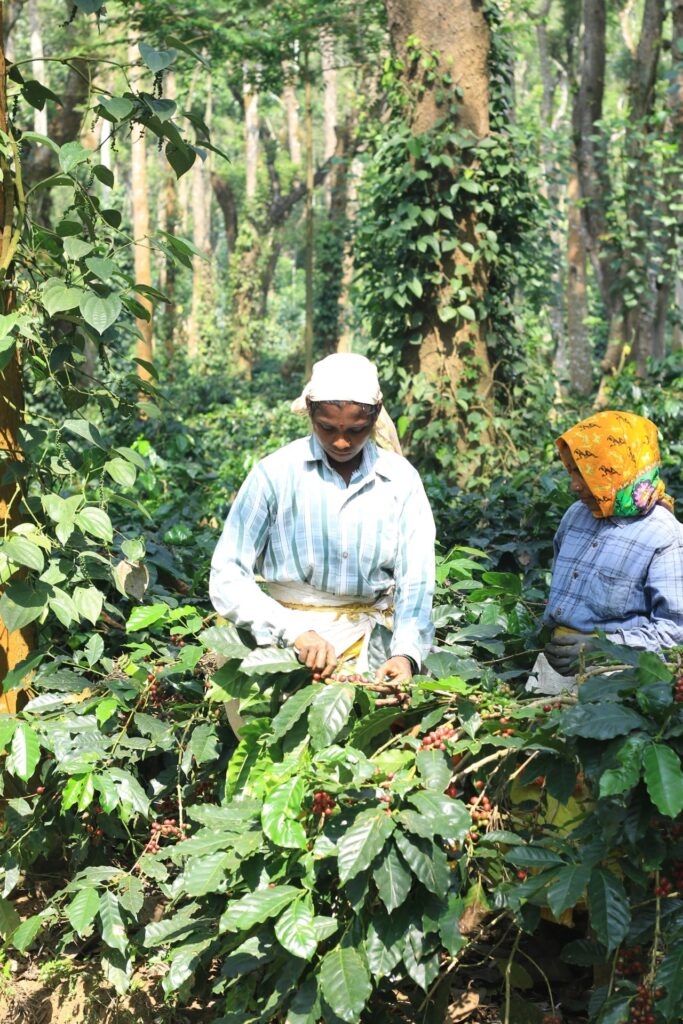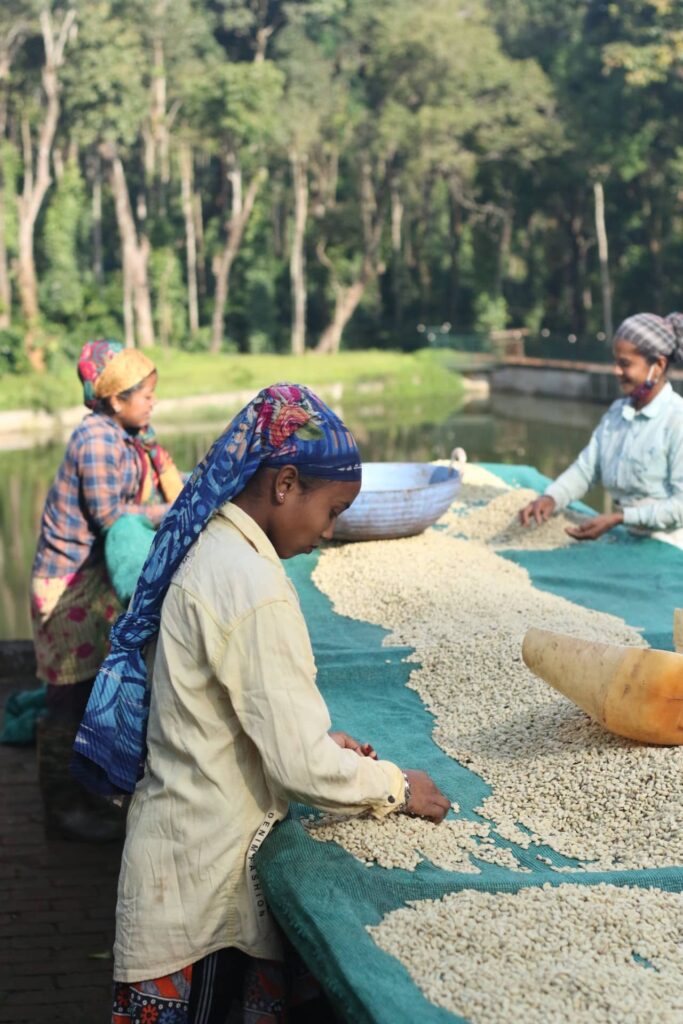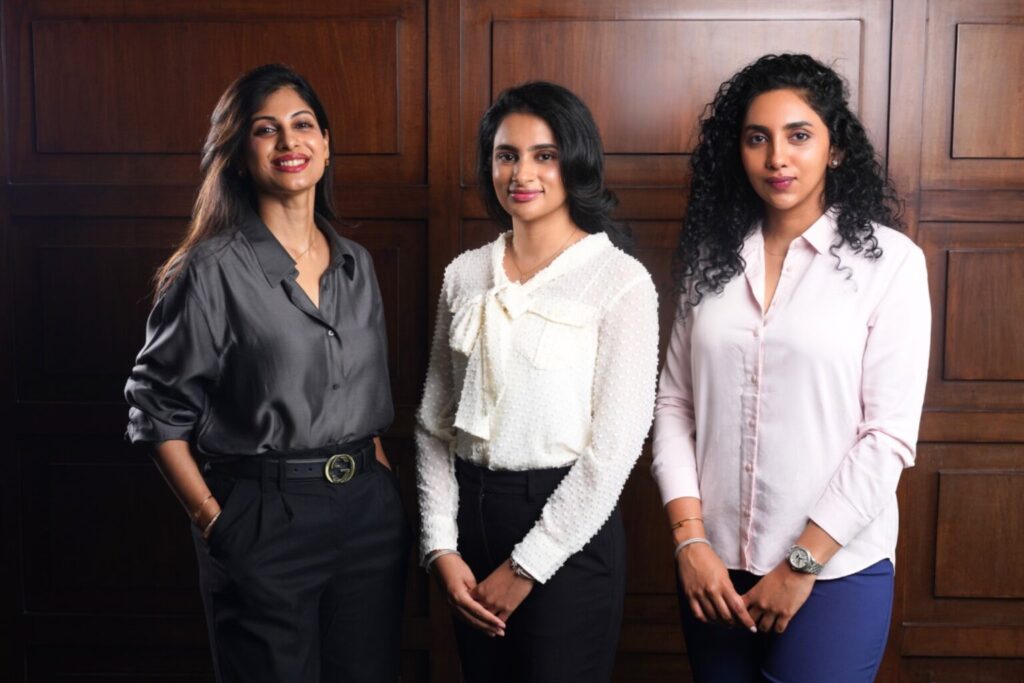
Sunalini Menon started working for the Coffee Board of India in 1971. Image Coffeelab
Global Coffee Report meets some of the women who’ve helped pave the way for the rapid expansion of India’s coffee industry.
On 1 January 2025, the Centre for Monitoring Indian Economy reported Indian coffee exports had exceeded US$1 billion for the first time, with its value increasing by 29 per cent between April and November in the 2024 fiscal year. This news was a major milestone in the growth of the country’s coffee export industry, which has accelerated over the past five years due to increasing global demand.
As India’s exports expand, so too does its domestic coffee industry. While traditionally a nation of tea drinkers, the almost 1.5 billion people that call it home are increasingly switching leaves for beans. The Coffee Board of India estimated that in 2023 domestic consumption reached 91,000 tonnes of green bean equivalent, up from 84,000 tonnes in 2012.
Now the world’s seventh largest coffee producer – and fifth largest Robusta producer – India is one of the major players. Yet, when Sunalini Menon, Founder of Coffeelab and Member of the Board of Directors of the Specialty Coffee Association, started working at the Coffee Board of India in 1971 the industry was unrecognisable.
“When I was growing up, coffee was only brewed at home and only consumed by the elderly. It was very expensive compared to tea, so that’s what most people drank. On every corner there would be a man selling tea and that’s what you’d have unless it was a special occasion,” Menon says.
“Any coffee that was consumed then was grown in India because the duty was so high that importing coffee for consumption wasn’t a workable position or a requirement at that point in time.”

In 2025, Indian coffee exports exceeded US$1 billion for the first time. Image: Kelachandra Coffee
Women in the field
The British East India Company introduced large-scale coffee cultivation to India in the 18th century and since its early origins women have played a role in farming the precious beans. While women have continued to prop up the country’s coffee farming workforce (a 2015 study by the Indian Statistical Institute estimated 34 per cent of workers in the coffee curing and manufacturing sector of India are women), Menon was India and Asia’s first female coffee taster when she assumed the role in the early 1970s.
“At the time, the profession was a completely male pasture. I originally wanted to become a dietician and had a scholarship to study in New York, but as I was waiting for my visa to be approved I applied for a job as a coffee taster at the Coffee Board of India,” she says.
“Part of the hiring process was a taste test which I did very well in, but when it came to the interview they said that despite my abilities they couldn’t hire me because I was a woman. They thought they would spend the time and money training me only for it to be wasted if I then decided to have a family.”
Menon stood her ground and complained that the job advertisement should have specified if it was a male-only role. Thankfully, the Chairman was forward thinking and gave her the opportunity to train as a coffee taster.
Her first few years in the role were tough, with most of her male colleagues ignoring her and not taking notice of her requests.
“I used to cry every day until finally my boss gave me some advice. He told me I had to first acquire my knowledge, have patience, and then my knowledge would become power,” she says.
“These are words I always pass on to young women today. Learn your subject, be very sure of what you are talking about, and then you’ll be firm in what you do. I think that was a turning point in my life, and that’s how I began my journey at the Coffee Board.”

Women have played a role in India’s coffee farming industry since its early origins. Image: Kelachandra Coffee.
Improving cup quality
Over her 50-year career, Menon has witnessed the revolution of the country’s coffee industry. She says the single biggest contributor to its success has been the focus on quality.
“In the 1970s, the Coffee Board took care of marketing Indian coffee and part of my role was assessing quality. This was because the smallholder farmers didn’t understand the market and were unsure of how to sell their coffees, nor understood the international coffee market, especially the pricing for their coffees and hence the government stepped in,” she says.
“I would receive coffee from the farmers and the payment would be decided by the quality of the beans, so they were incentivised to improve the quality of their crop. The farmers didn’t like the setup at first, but when the markets were liberalised in 1996 it meant they had learned what the markets would expect – they saw the value in cupping as a marketing tool.”
Even after the liberalisation of the Indian coffee market, Menon continued to help the farmers asses the quality of their coffee.
“Many of the farmers I worked with came to me and said, ‘How can you leave us? We don’t know much about quality, how to sell, or how to process. You can’t leave us in the lurch’. I thought I’d help them for a couple of weeks, but the months started passing by,” she says.
“It was a great journey because the farmers really started to understand how they could improve quality and get more money for their coffee.”
While in many producing countries Arabica has traditionally been processed more carefully than Robusta to produce a premium product, Menon says that wasn’t the case with the farmers she worked with, nor the other coffee farmers in India.
“We never treated Robusta differently to Arabica. We replicated the processing methods, so we were preparing and offering washed Robustas to the international market too. At the time, farmers asked if they were wasting their time, money, and water, but I assured them it was worth it. That process has created some of the finest coffees in the world market – one that India is now famous for,” she says.
“Through all these years of hard work, today I can hold my head up and say Indian coffee is of a very high quality. What’s more, there are now a lot more women in the industry. I teach a Master’s course in Coffee Science and Economics at the University of Udine in Italy, under the Ernesto Illy Foundation, and I have students from all over the world. I feel very proud because I see so many of my young women doing so well here in India.”

Left to right: Neleema Rana George, Ryana Kuruvilla, and Rishina Kuruvilla. Image: Kelachandra Coffee.
The female factor
Women’s growing role in the coffee sector is reflected in the number of women who work at Kelachandra Coffee, one of the country’s oldest and largest privately owned coffee plantations. According to Ryana Kuruvilla, Head of People and Culture at Kelachandra Coffee, 55 per cent of its workforce are female.
“Overall, more than half of our workforce are women. That includes our office staff, and the farmers who work on the 6300 acres of coffee estates we manage in Karnataka and Kerala,” says Kuruvilla.
“In India, all coffee is hand-picked, and women have traditionally made up the majority of the pickers. During the harvest season, we have hundreds of families who come to live on the estate and my job is to look after the employees and make their lives easier while they are staying and working with us.”
Kuruvilla is one of a number of women in leadership positions at Kelachandra. The family business, which dates back to 1786 and ventured into coffee in 1995, is invested in the role women play in the growth of India’s coffee industry.
“There is a small but experienced group of women who are changing the Indian coffee industry for the better,” says Neleema Rana George, Head of Coffee Works and Technology at Kelachandra.
“People like Namrata Asthana, Co-Founder of Blue Tokai, and Arshiya Bose, Founder of Black Baza Coffee, are introducing specialty coffee to Indian consumers. Furthermore, Sunalini Menon consults on our farms, sharing her knowledge with our estate managers to ensure the taste and quality of our coffee is the best it can be.”
George believes women are increasingly influencing the industry because of shifting values and the generational nature of coffee businesses in India.
“Coffee is very much a family business, so children often learn a lot about it from a young age. Especially on the estates, it’s a very organic industry for women to get into because they are knowledgeable about the processes and have grown up surrounded by it,” she says.
“In other areas of the supply chain, café groups such as Blue Tokai and Black Baza Coffee Co, are creating a real coffee culture in India. Over the past five years, domestic coffee consumption has increased by around 30 per cent and I think that’s largely due to third-wave coffee shops introducing quality coffee and different flavours.”
Responding to this growing interest in specialty coffee, George says many second- and third-generation farmers have focused their production on specialty-grade crops.
“The increased interest in drinking specialty coffee in India is driving the quality of the coffee grown here,” she says.
“However, when we attend international expos, we often find people assume India only produces commodity coffee. They often haven’t experienced Indian specialty and when we introduce it to them they’re surprised and impressed by it.”
Drive for sustainability
As well as empowering its workforce, Kelachandra Coffee is dedicated to the continued improvement of Indian coffee and believes creating a sustainable future for the industry is paramount to its success.
Rishina Kuruvilla, Head of Sustainability at the company, says India’s tradition of shade growing coffee means it is somewhat shielded from some of the extreme weather events that can decimate coffee yield in other producing countries such as Brazil and Vietnam. However, sustainability is still a major focus for the company.
“We strive to use as few pesticides and chemicals as possible in the coffee production process, so we compost where we can to ensure nutrients go back into the soil. We are also very stringent about our chemical use to protect the natural landscape surrounding the coffee plantations,” she says.
“We also do a lot of intercropping, so our coffee trees are planted alongside citrus and jack fruits. As well as increasing biodiversity, this process improves the flavour of the coffee as the other fruits add unique flavours to the beans as they grow.”
With extreme weather causing production issues in many other countries, Kuruvilla believes India can step in to fill the gap as global demand for coffee continues to rise.
“In India, we have a lot of our natural advantages against these weather issues. Everything is done by hand here, so we’re not using machines to strip the land. Every aspect of our coffee processing method is taken with care to ensure we don’t harm the land so that people can continue to farm coffee this way for generations to come,” she says.
“Last year, India produced 350,000 tonnes of coffee and an increasing number of people are getting into the industry so that’s expected to increase. We’re ready to step up and introduce even more people to the joys of quality Indian coffee.”
This article was first published in the March/April 2025 edition of Global Coffee Report. Read more HERE.
source: http://www.cgrmag.com / Global Coffee Report / Home> Features> India / by Kathryn Lewis / April 19th, 2025

